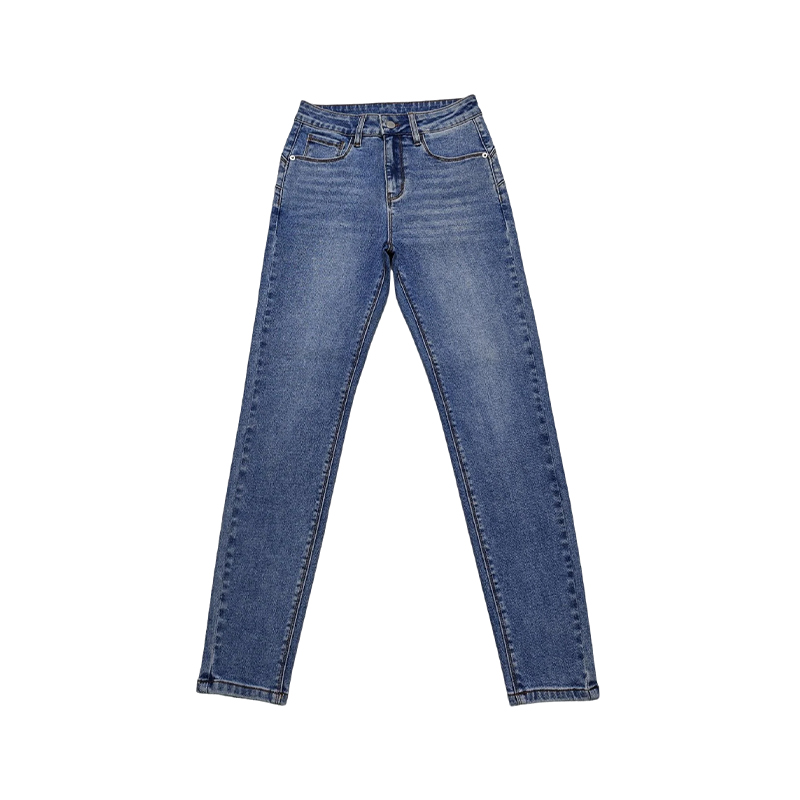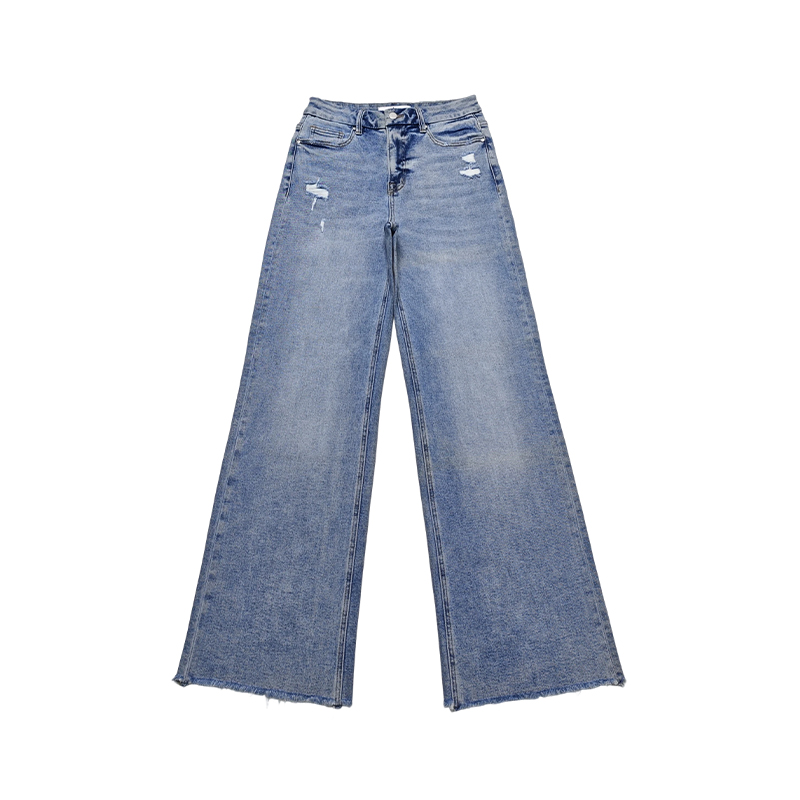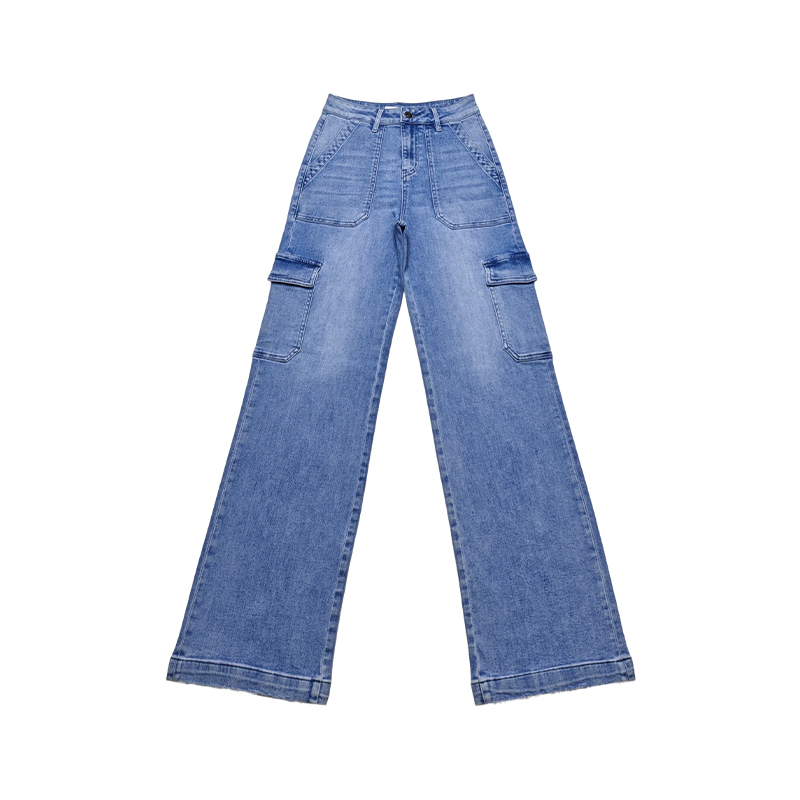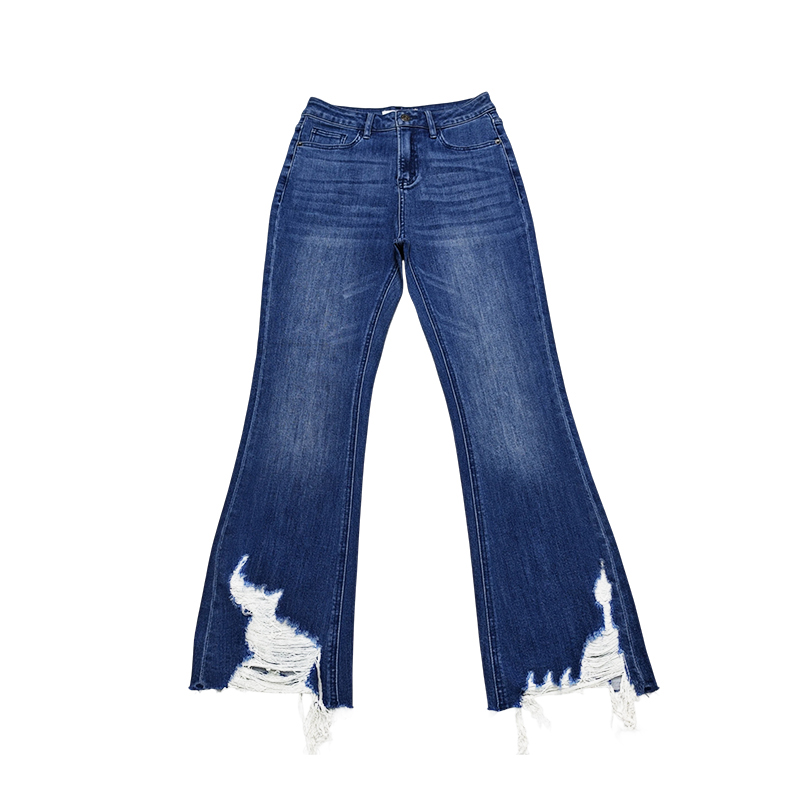How do women's jeans rely on wear-resistant fabrics to maintain durability against frequent daily wear?
Release Time : 2025-07-01
In order for women's jeans to maintain durability in frequent daily wear, wear-resistant fabrics are the key. From fabric material selection to process processing, all levels of control are required to make jeans stand the test of time.
First of all, the selection of high-quality wear-resistant fabrics is the basis. The denim commonly used in women's jeans is made of cotton as the main raw material, and high-count combed cotton has longer and neater fibers, and the woven fabric is tight and tough, which can effectively resist daily friction. For example, the yarn made by ring spinning has a tight structure, which makes the surface of the fabric flat, reduces the possibility of pilling due to friction, and improves the wear resistance of jeans from the source, laying a good foundation for frequent wear.
The fabric structure also has an important influence on the degree of wear resistance. The traditional three-up and one-down right twill structure is the classic structure of jeans. This twill arrangement makes the interweaving points between the yarns close, and the surface of the fabric forms an inclined pattern. When subjected to external force, it can evenly disperse the pressure and avoid local excessive wear. Moreover, with the development of modern textile technology, some new denim fabrics with new structures are constantly emerging. They optimize the interweaving method on the basis of tradition, further enhancing the wear resistance and durability of the fabric.
During the fabric processing process, special treatment processes can also enhance its wear resistance. For example, pre-shrinkage treatment uses physical methods to shrink the fabric in advance to prevent deformation and fiber breakage caused by shrinkage during subsequent wearing and washing, thereby extending the service life. There are also some anti-wrinkle treatment processes that can reduce the crease damage caused by repeated folding and extrusion of the fabric, so that jeans can remain in good condition even if they are worn frequently, reducing the risk of damage due to wear and tear at the crease.
The dyeing process is also important for wear resistance. High-quality dyeing technology can not only ensure long-lasting and bright colors, but also improve the strength of the fabric. At present, advanced dyeing technology, such as environmentally friendly reactive dyeing, can fully combine dyes with fibers while ensuring color fastness, reduce the damage to fabric fibers during the dyeing process, maintain the original strength and toughness of the fabric, and allow jeans to maintain wear resistance after multiple washings.
The finishing process also contributes to the wear resistance of jeans. After enzyme washing, stone washing and other post-finishing treatments, on the one hand, it can give jeans a unique appearance and soft feel, and on the other hand, it can remove the hairiness on the surface of the fabric, reduce the pilling phenomenon caused by the entanglement of hairiness, and make the surface of the fabric smoother, reduce the friction coefficient with the outside world, and thus enhance its wear resistance.
In addition to the fabric itself, the pattern design and sewing process of jeans are also closely related to wear resistance. Reasonable pattern design can make jeans bear force evenly when worn, avoiding local damage due to excessive pulling. And exquisite sewing technology, such as using strong double-line stitching and reinforcing stitches at key parts, can ensure that the seams of jeans are not easy to crack during frequent wear and activities, which complements the wear-resistant fabric and jointly guarantees the wear resistance of jeans.
Through careful control of fabrics from selection, processing to post-finishing, combined with reasonable pattern and sewing technology, women's jeans can rely on wear-resistant fabrics to maintain good wear resistance in daily frequent wear and accompany the wearer for more time.







